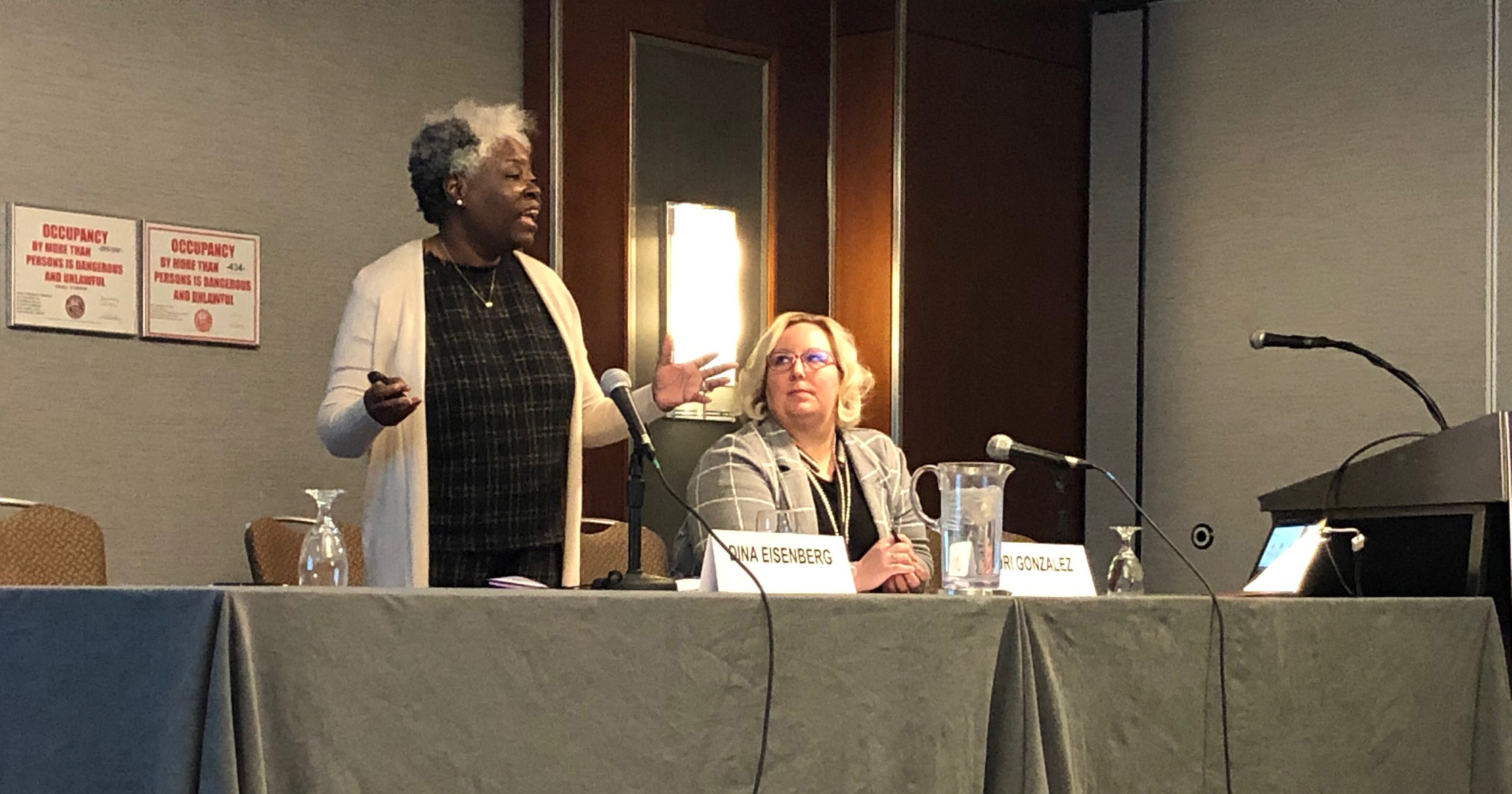Improving communication—with tech and otherwise—can help you keep employees

From left: Dina Eisenberg and Lori Gonzalez. Photo by Amanda Robert.
Almost 70% of employees who are properly onboarded stay at their jobs for at least three years, according to a study cited by Dina Eisenberg during Thursday’s ABA Techshow panel, “Keying into People: Solving Onboarding and Turnover with Intention and Tech.”
Eisenberg, the CEO of training and consulting firm Outsource Easier in Oakland, California, contended during the panel that these employees also come up to speed 25% faster, which in turn means they generate revenue for their employers faster.
“You want to make your workplace a place that someone wants to stay for those three years, because folks do have other opportunities,” she said. “It’s not like you will never have anyone leave, but you want to make sure your turnover rate is such that your law firm is running smoothly.”
Eisenberg said law firm employers can avoid high rates of turnover by addressing key factors causing their employees to leave voluntarily or even involuntarily, such as time demands, lack of training and job satisfaction.
She added that another factor employers tend to miss is the employee’s fit with the firm culture.
“Nobody trained you in law school to know how to hire or lead a team, and sometimes you hire someone because the skillset is right, but they are not the person you need to be part of your firm,” Eisenberg said.
She suggested that law firm employers reduce turnover and create a happier, more productive work environment by engaging with employees on a personal level and forming a connection that goes beyond a role-based relationship.
Follow along with the ABA Journal’s coverage of the ABA Techshow 2020 here.
Lori Gonzalez, the president and CEO of the RayNa Corp. in Nashville, Tennessee, and a former paralegal, agreed with Eisenberg, saying that in her own experience, the attorneys who cared enough to ask her questions were the ones who earned “undying loyalty from me.”
Now, in her own company—which offers billing, medical record retrieval, and process and technology consulting services—she tells potential employees that she may be offering a “boring job,” but she will do her best to ensure they find other ways to enjoy their work.
“The connections are easy to make when you’re just having those conversations,” Gonzalez says.
Eisenberg contended that employers also need to tell potential employees how they will help fulfill the mission of the firm and what will be expected of them. She said it often takes at least six months for new employees to understand their tasks and responsibilities, and employers should avoid firing them during that time frame.
Gonzalez added that law firm employers can provide feedback to new employees who may be performing poorly during that period. She said she often starts with questions about why those employees are struggling and has been surprised to find it’s because she failed to provide the right tools or training.
Eisenberg agreed that if an employee is not meeting expectations, it may be because they haven’t been taught in a way that works for them.
“It’s easy to say, ‘Is there something I can do, give or show you that will make it easier for you to learn this task?’” she said. “Understand their learning style, and support that particular style.”
Eisenberg and Gonzalez suggested that law firm employers take advantage of technology to help solve some of the problems with their employees.
Eisenberg recommended using Loom or QuickTime to record training videos that employees can refer to when they have questions or need assistance.
Gonzalez also provided tools that improve communication, including Slack, a cloud-based instant messaging platform; Asana, an application that helps teams organize, track and manage their work; and Trello, a list-making application.
“How do you retain folks?” Eisenberg asked. “You’re open, transparent, you communicate and you care about them.”



